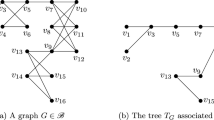Abstract
Sum-rank Hamming codes are introduced in this work. They are essentially defined as the longest codes (thus of highest information rate) with minimum sum-rank distance at least 3 (thus one-error-correcting) for a fixed redundancy r, base-field size q and field-extension degree m (i.e., number of matrix rows). General upper bounds on their code length, number of shots or sublengths and average sublength are obtained based on such parameters. When the field-extension degree is 1, it is shown that sum-rank isometry classes of sum-rank Hamming codes are in bijective correspondence with maximal-size partial spreads. In that case, it is also shown that sum-rank Hamming codes are perfect codes for the sum-rank metric. Also in that case, estimates on the parameters (lengths and number of shots) of sum-rank Hamming codes are given, together with an efficient syndrome decoding algorithm. Duals of sum-rank Hamming codes, called sum-rank simplex codes, are then introduced. Bounds on the minimum sum-rank distance of sum-rank simplex codes are given based on known bounds on the size of partial spreads. As applications, sum-rank Hamming codes are proposed for error correction in multishot matrix-multiplicative channels and to construct locally repairable codes over small fields, including binary.
Similar content being viewed by others
References
Barra A., Gluesing-Luerssen H.: MacWilliams extension theorems and the local-global property for codes over Frobenius rings. J. Pure Appl. Algebra 219(4), 703–728 (2015).
Berger T.P.: Isometries for rank distance and permutation group of Gabidulin codes. IEEE Trans. Inform. Theory 49(11), 3016–3019 (2003).
Beutelspacher A.: Partial spreads in finite projective spaces and partial designs. Math. Z. 145(3), 211–229 (1975). Oct.
Beutelspacher A.: On \(t\)-covers in finite projective spaces. J. Geom. 12(1), 10–16 (1979).
Delsarte P.: Bilinear forms over a finite field, with applications to coding theory. J. Comb. Theory Ser. A 25(3), 226–241 (1978).
Etzion T.: Perfect byte-correcting codes. IEEE Trans. Info. Theory 44(7), 3140–3146 (1998). Nov.
Etzion T., Greenberg G.: Constructions for perfect mixed codes and other covering codes. IEEE Trans. Info. Theory 39(1), 209–214 (1993).
Gabidulin E.M.: Theory of codes with maximum rank distance. Problems Inf. Transm. 21(1), 1–12 (1985).
Gopalan P., Huang C., Simitci H., Yekhanin S.: On the locality of codeword symbols. IEEE Trans. Info. Theory 58(11), 6925–6934 (2012). Nov.
Gorla E., Ravagnani A.: Partial spreads in random network coding. Finite Fields Appl. 26, 104–115 (2014).
Hamming R.W.: Error detecting and error correcting codes. Bell Syst. Tech. J. 29(2), 147–160 (1950). April.
Herzog M., Schonheim J.: Linear and nonlinear single-error-correcting perfect mixed codes. Inf. Control 18(4), 364–368 (1971).
Huffman W.C., Pless V.: Fundamentals of Error-Correcting Codes. Cambridge University Press, Cambridge (2003).
Kötter R., Kschischang F.R.: Coding for errors and erasures in random network coding. IEEE Trans. Inf. Theory 54(8), 3579–3591 (2008).
Loidreau P.: Properties of codes in rank metric. In: Eleventh International Workshop on Algebraic and Combinatorial Coding Theory ACCT2008, Pamporovo, Bulgaria, June (2008).
Lu H.-F., Kumar P.V.: A unified construction of space-time codes with optimal rate-diversity tradeoff. IEEE Trans. Inf. Theory 51(5), 1709–1730 (2005). May.
Martínez-Peñas U.: Skew and linearized Reed-Solomon codes and maximum sum rank distance codes over any division ring. J. Algebra 504, 587–612 (2018).
Martínez-Peñas U.: Theory of supports for linear codes endowed with the sum-rank metric. Des. Codes Cryptogr. 87, 2295–2320 (2019).
Martínez-Peñas U., Kschischang F.R.: Reliable and secure multishot network coding using linearized Reed–Solomon codes. IEEE Trans. Info. Theory 65(8), 4785–4803 (2019). Aug.
Martínez-Peñas U., Kschischang F.R.: Universal and dynamic locally repairable codes with maximal recoverability via sum-rank codes. IEEE Trans. Info. Theory 65, 7790–7805 (2019).
Nóbrega R.W., Uchôa-Filho B.F.: Multishot codes for network coding using rank-metric codes. In: Proc. 2010 Third IEEE International Workshop on Wireless Network Coding, pp. 1–6 (2010).
Rawat A.S., Koyluoglu O.O., Silberstein N., Vishwanath S.: Optimal locally repairable and secure codes for distributed storage systems. IEEE Trans. Inf. Theory 60(1), 212–236 (2014). Jan.
Sidorenko V., Schmidt G., Gabidulin E., Bossert M., Afanassiev V.: On polyalphabetic block codes. In: Proc. IEEE Info. Theory Workshop (2005).
Acknowledgements
The author wishes to thank Frank R. Kschischang for valuable discussions on this manuscript.
Author information
Authors and Affiliations
Corresponding author
Additional information
Publisher's Note
Springer Nature remains neutral with regard to jurisdictional claims in published maps and institutional affiliations.
This is one of several papers published in Designs, Codes and Cryptography comprising the “Special Issue on Codes, Cryptology and Curves”.
Supported by The Independent Research Fund Denmark (Grant No. DFF-7027-00053B).
Rights and permissions
About this article
Cite this article
Martínez-Peñas, U. Hamming and simplex codes for the sum-rank metric. Des. Codes Cryptogr. 88, 1521–1539 (2020). https://doi.org/10.1007/s10623-020-00772-5
Received:
Revised:
Accepted:
Published:
Issue Date:
DOI: https://doi.org/10.1007/s10623-020-00772-5
Keywords
- Hamming codes
- Hamming metric
- Locally repairable codes
- Multishot network coding
- Rank metric
- Simplex codes
- Sum-rank metric




